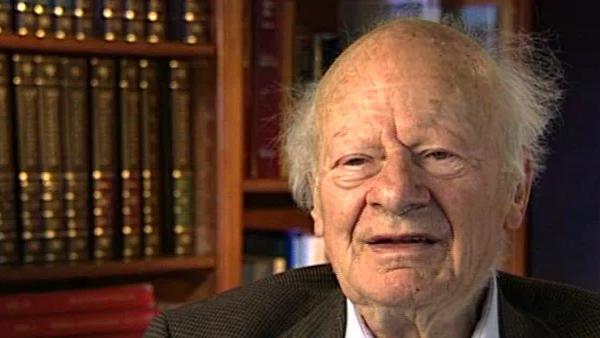NEXT STORY

Accelerating shocks in supernovae
RELATED STORIES

NEXT STORY

Accelerating shocks in supernovae
RELATED STORIES


|
Views | Duration | |
|---|---|---|---|
| 131. Stages in the stellar evolution theory | 1 | 288 | 03:34 |
| 132. Gerald Brown suggests solving the problem of supernova | 314 | 02:02 | |
| 133. Figuring how a supernova happens | 283 | 03:18 | |
| 134. James Wilson’s theory of supernovae | 299 | 03:02 | |
| 135. More on supernovae, the gain point | 249 | 03:05 | |
| 136. Supernova shocks | 260 | 03:44 | |
| 137. Accelerating shocks in supernovae | 245 | 02:58 | |
| 138. The 1987 supernova | 271 | 03:00 | |
| 139. Supernovas and the origin of the elements | 262 | 03:31 | |
| 140. Gerry Brown speculates on the formation of binary neutron stars | 256 | 02:35 |


There still remained one interesting question. When you have the gain point, the material inside the gain point has the feature that the entropy increases steadily with distance from the center. On the other hand, once you are beyond the gain point, the entropy will decrease from there on out. You have a maximum of the entropy at the gain point, and one of the difficulties was you make the neutrino capture and therefore the energy, close to the gain point; but how do you get them out to the shock which goes out through the... through the star? And that I then suggested is... goes by convection, because once the entropy decreases with increasing radius, it is known that this is unstable to convection. This was found by Karl Schwarzschild, the father of the Martin Schwarzschild who is the [first] modern astrophysicist. So you then get convection, so as you absorb neutrinos and heat the material, that hot material goes out to the surface and drives a shock. Now, then the shock starts just with a velocity which is given to it by the amount of matter which has accreted by further material falling in, and that velocity is a few thousand kilometers per second. That seems fast enough but when you looked at the... at the numerical calculations by Jim Wilson and his collaborators, you found that after a certain time the velocity of the shock gets to be much bigger: tens of thousands, or let me say 10 to 20,000 kilometers per second. How does that come about? And there I made a wrong theory. I thought it came about because the nucleons which you have produced in the shock at high temperature begin to recombine once the temperature falls below 10 billion degrees. So you get the recombination and that recombination gives you energy and that energy I thought accelerates the shock.
The late German-American physicist Hans Bethe once described himself as the H-bomb's midwife. He left Nazi Germany in 1933, after which he helped develop the first atomic bomb, won the Nobel Prize in Physics in 1967 for his contribution to the theory of nuclear reactions, advocated tighter controls over nuclear weapons and campaigned vigorously for the peaceful use of nuclear energy.
Title: Supernova shocks
Listeners: Sam Schweber
Silvan Sam Schweber is the Koret Professor of the History of Ideas and Professor of Physics at Brandeis University, and a Faculty Associate in the Department of the History of Science at Harvard University. He is the author of a history of the development of quantum electro mechanics, "QED and the men who made it", and has recently completed a biography of Hans Bethe and the history of nuclear weapons development, "In the Shadow of the Bomb: Oppenheimer, Bethe, and the Moral Responsibility of the Scientist" (Princeton University Press, 2000).
Tags: Karl Schwarzschild, James Wilson
Duration: 3 minutes, 45 seconds
Date story recorded: December 1996
Date story went live: 24 January 2008